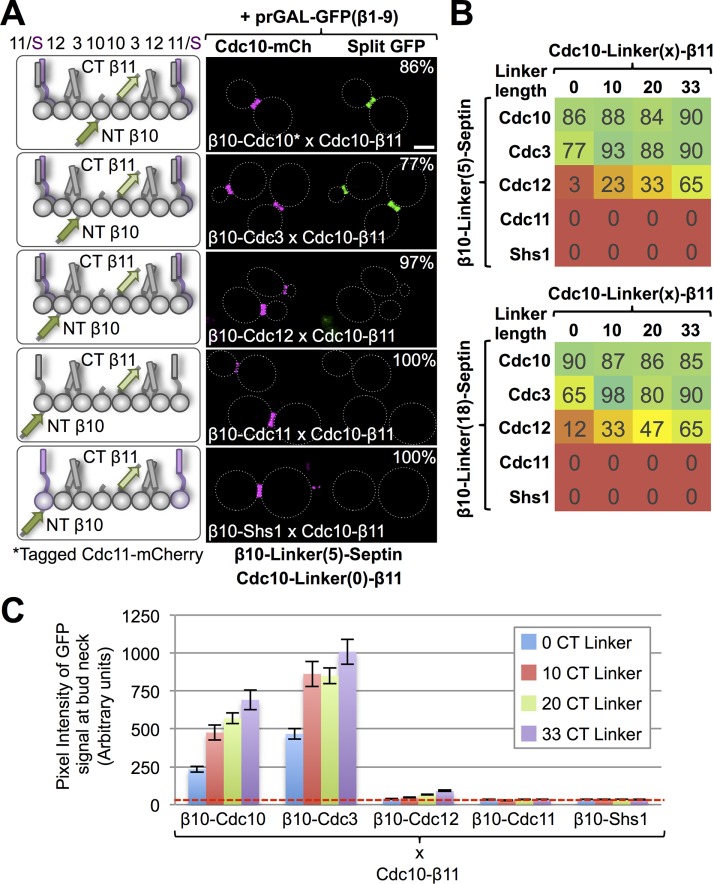FIGURE 2:
Influence of linker length on the output of the tripartite split-GFP system. (A) Left, diploid yeast (strains 24–28) were generated that express Cdc10-β11 along with each of the β10-septins (with the tags appended using the linker lengths given) as indicated, as well as a CEN plasmid (pGF-IVL794) to express GFPβ1-9 (unpublished data). Right, cultures of each of the corresponding diploids were grown and the cells imaged as in Figure 1B. Representative images are shown, and the percentage of the cells displaying the pattern shown is indicated in the upper right-hand corner. The fiducial marker for the septin collar is Cdc10-mCh expressed in the same cells, except in the cells expressing Cdc10-β11 and β10-Cdc10 (top), for which the marker is Cdc11-mCh. (B) Heat map depicting the percentage of cells (number in the box) in the population exhibiting a readily detectable green fluorescence signal for 40 diploids (strains 10–14, 17–21, 24–28, 31–35, 38–42, 45–49, 52–56, and 59x63) with the arrangements shown in A, but where the linker connecting the β11 tag to the C-terminus of Cdc10 was systematically varied from 0 to 10, 20, or 33 residues as indicated (at top) and the linker between the N-terminal β10 tag and the N-terminus of each septin was 5 or 18 residues as indicated (at left). (C) Quantification, as in Figure 1C, of data for the diploids for which the linker lengths for Cdc10-β11 were 0, 10, 20, or 33 residues as indicated and the linker between the N-terminal β10 tag and the N-terminus of each septin was five residues (strains 10–14, 17–21, 24–28, and 21–35).

